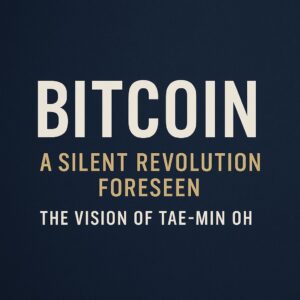🔍 Why Asia Is Tesla’s Top Growth Engine in 2025
Asia continues to play a pivotal role in Tesla’s global roadmap. As of mid-2025, over 55% of Tesla’s global deliveries originate from or are sold within the Asia-Pacific region. This dominance is not accidental—it’s the result of strategic manufacturing in China, adaptive pricing strategies, and expansion into high-potential emerging markets.
Urban population growth, rising middle-class income, and aggressive clean energy policies across Asia have created a fertile environment for EV adoption. Governments in Thailand, India, and Malaysia are rolling out EV subsidies and tax breaks, while infrastructure investments in superchargers and battery production are accelerating. Tesla is capitalizing on these trends with a multi-pronged approach—focusing on local manufacturing, regional partnerships, energy storage, and tailored product offerings.
🇨🇳 China: Gigafactories, Energy Storage & Price Wars
🔧 Shanghai: The Global Production Backbone
- Annual capacity: Nearly 1 million vehicles annually, primarily Model 3 and Y
- Exports: 14,700+ Model Y units shipped in May 2025 (↑175% YoY)
- Local integration: High localization rate of parts and suppliers
- Strategic value: Shanghai is Tesla’s largest Gigafactory globally and serves as the export hub for Asia, Europe, and Oceania markets
⚡ Megapack Manufacturing for Asia-Pacific
- Shanghai Megafactory: Commenced operation in Q1 2025
- Output: 40 GWh/year of Megapack battery storage units
- Applications: Grid-scale backup for governments, utilities, and remote infrastructure across Asia
- Key buyers: Japan’s TEPCO, Australia’s AGL, and energy projects in the Philippines and Malaysia
💸 Price Cuts & Budget Model Variants
- Aggressive pricing: Model Y prices slashed by 10–15% in key Chinese cities
- Upcoming model: A low-cost Model Y variant designed for urban China (projected to be $7,000 cheaper)
- Target audience: Young urban professionals and small business owners
- Leasing programs: Introduced in July 2025 to offer low down payment, high-residual financing options
🌏 Southeast Asia: Tesla’s Emerging Powerhouse Region
🇹🇭 Thailand
- Market leadership: Model Y became Thailand’s best-selling SUV in Q2 2025
- EV adoption: Surged by 1,035% MoM in May due to tax exemptions and reduced registration fees
- Infrastructure boost: Tesla opened five new showrooms and service centers this year
🇲🇾 Malaysia
- Digital-first sales strategy: Entire Tesla sales journey, from booking to delivery, conducted online
- Home charging incentives: Every purchase includes a government-subsidized wall connector
- Q2 2025 growth: 37% YoY growth in deliveries
🇸🇬 Singapore
- Charging infrastructure: Tesla launched the first V4 Supercharger stations in Southeast Asia
- Bundled incentives: Customers receive one year of free supercharging and installation support for home chargers
🇮🇩 Indonesia & 🇻🇳 Vietnam
- Pre-launch activities: Model Y preorders opened in Jakarta and Ho Chi Minh City in Q2 2025
- Supply chain partnerships: Tesla is in discussions with nickel-rich Indonesia for battery materials sourcing and with Vietnam for logistics collaboration
Competitive Insight: Tesla currently holds 8% of SEA’s EV market versus BYD’s 26%. With ongoing investment in retail, charging, and localization, Tesla aims to surpass 15% market share by Q1 2026.
🇮🇳 India: The Next Big Gamble
🚧 Tariffs & Negotiation Roadblocks
- Import duties: Remain a steep 70–100%, limiting Tesla’s ability to price competitively
- Plant location talks: Ongoing discussions with state governments including Maharashtra, Gujarat, and Karnataka
- Conditional entry: Tesla seeks tax waivers for initial imports before committing to local manufacturing
🧪 Market Entry Strategy
- Soft launch: Tesla began accepting Model Y reservations in Mumbai and Delhi via invite-only pilot
- Consumer feedback: Early adopters cite brand prestige and sustainability as primary motivations despite high prices
- Test marketing: Tesla is monitoring regional purchase trends, regulatory developments, and infrastructure readiness before full rollout
India’s size, population density, and rapidly growing EV ecosystem make it a long-term strategic frontier—but high entry costs and bureaucratic friction require a cautious approach.
🔋 Energy Storage & Supercharging Network Expansion
🌐 Megapack Growth Strategy
- Shanghai output: 10,000+ Megapacks expected to ship across APAC by end of 2025
- Deployment sites: Philippines (off-grid solar support), Japan (peak demand management), Australia (rural backup power)
⚡ Supercharger Ecosystem
- Active sites: Over 600 Superchargers across Asia
- Open access program: Tesla is testing “non-Tesla EV access” in South Korea, Thailand, and Singapore
- Expansion targets: Taiwan, Vietnam, and Indonesia by early 2026
🚧 Strategic Challenges Tesla Must Overcome
| Challenge | Region | Risk | Tesla’s Countermeasure |
|---|---|---|---|
| Price war with BYD | China, SEA | Margin erosion | Budget models, Tesla Energy margin support |
| High import duties | India | Sales volume stagnation | Hybrid entry strategy with phased factory plans |
| Supply chain local content laws | Indonesia, Malaysia | Compliance issues | JV with local suppliers, long-term raw material contracts |
| Infrastructure gaps | Vietnam, Philippines | Slower adoption | Fast-track Supercharger and service network deployment |
✅ Conclusion: Tesla’s Long-Term Bet on Asia
Tesla’s 2025–26 strategy reflects its aggressive and adaptable approach to the world’s fastest-growing EV market. From Shanghai’s dual-role as vehicle and battery export hub to Southeast Asia’s exponential growth and India’s cautious testbed rollout, Tesla is playing a high-stakes, high-reward game in Asia.
The key to victory? Balancing affordability, infrastructure, and local alignment while sustaining innovation and brand prestige.
As the EV arms race accelerates, Tesla’s willingness to localize manufacturing, expand charging infrastructure, and deliver energy storage at scale may define whether it continues to lead—or watches regional competitors race ahead.
Subscribe for future updates on Tesla’s EV footprint in Asia and exclusive data breakdowns by country, model, and segment.










